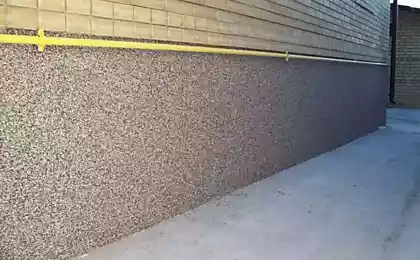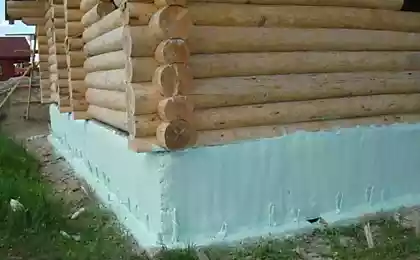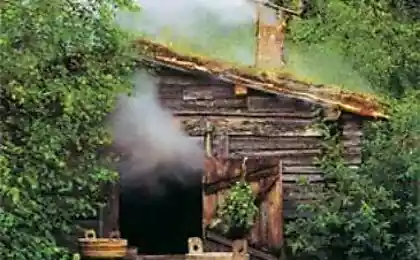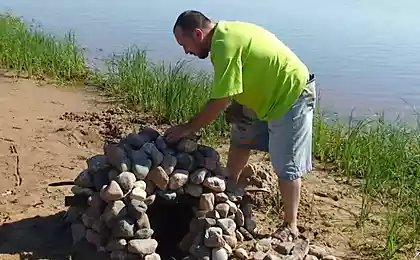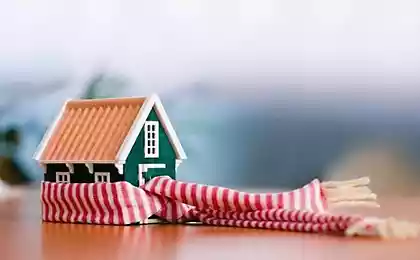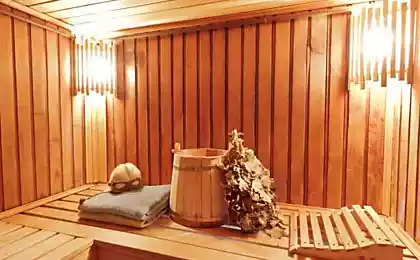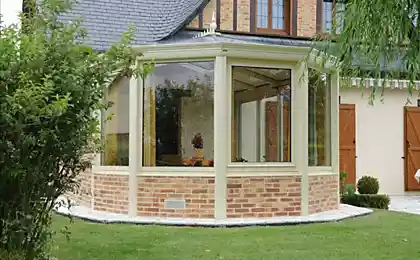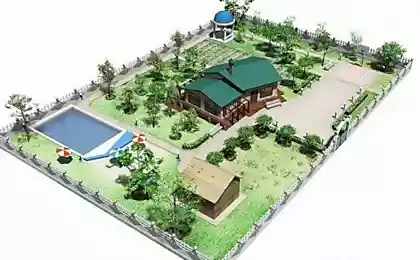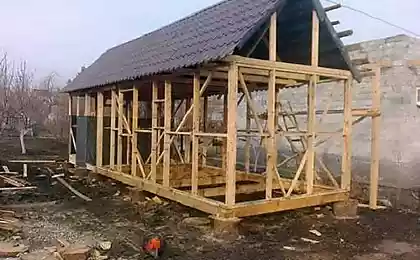316
How to properly insulate the bath with your own hands
As you know, energy is becoming more expensive every year. What should the owner of the bath under construction do in order to be able to enjoy the steam room in the future and save on its maintenance? To solve this issue will help competent insulation of all structural parts of the bath: floor, walls and ceiling. This rule applies to any residential buildings, but when insulating a bath, there are secrets that will be disclosed in this article.
What materials are used to heat baths. Their pros and consParticular attention should be paid to:

Preparation for bath insulation begins with the choice of insulating material. Which one should you choose? The answer lies in the main purpose of this building, namely the maintenance of high temperature and the created healing atmosphere inside the steam room. Therefore, it is allowed to use only environmentally friendly and biologically inert materials, both for construction and for insulation of this structure. Those samples of heat insulators that do not withstand high temperature regimes, are able to emit unpleasant odors and gases, spray small particles, are not allowed to use. When choosing thermal insulation for a bath, these factors must be considered.
Insulation, the use of which is optimal in the construction of a bath, can be divided into two classes:
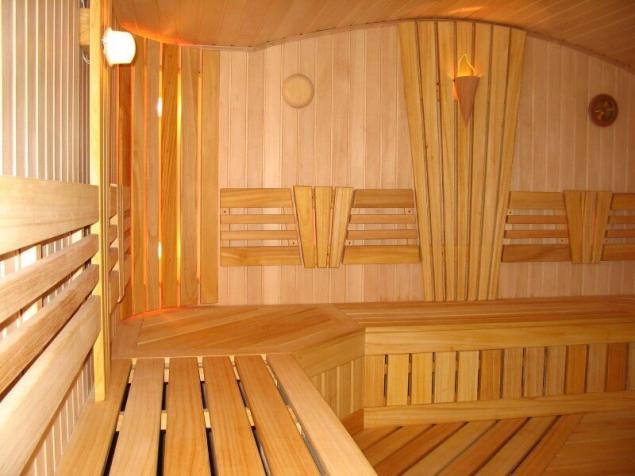
Insulation of the walls of the bath requires a thorough analysis of existing materials so that the price-quality ratio is most justified.
There are several materials ideally suited for extreme steam room conditions. They will be discussed later.
1. Stone wool
Stone (or otherwise mineral, basalt wool) is a leader among insulation, which has almost no shortage, except for a fairly large volume. It must be taken into account when planning the structure.
Minwata is an environmentally friendly material made during the processing of basalt rock. It does not harm human health or the environment. The finest fibers are formed into layers of varying density and mass. This insulation has truly unique characteristics, thanks to which it has become one of the favorite types among experienced builders.
For the first time, filaments similar to thin filaments were discovered by residents of the Hawaiian Islands after the eruption of one of the volcanoes. Basalt rock melted in the vent at a temperature of over 2000 degrees. Later, the natural formation of stone fiber was repeated in production. Molten in the furnace to 1500 degrees, the rock passing through the streams of air, turns into solid thin fibers. After applying special binders, at 300 degrees and pressure, they are pressed into plates.
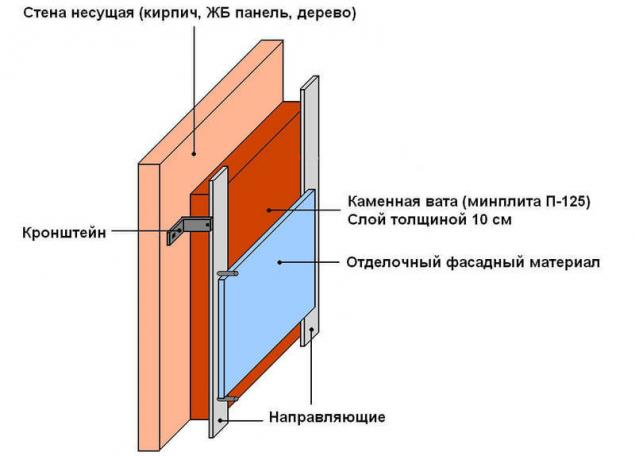
Technological characteristics of stone wool:
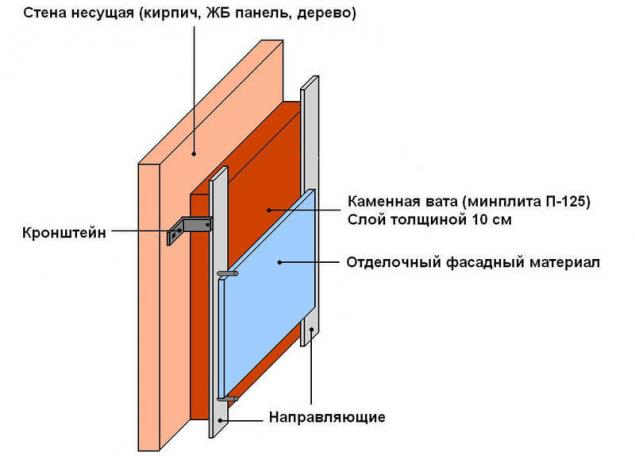
2. Glass
The structural structure of this material is identical to stone wool. Many small fibers of inorganic glass, intertwined, form air chambers that perfectly retain heat. At the same time, the vapor permeability of glass remains excellent. The material is produced, both in rolls and plates of various thickness and sizes.
This material is used much longer than basalt wool, and is much cheaper, but the technical characteristics are slightly lower. A significant disadvantage of glass wool is its effect on allergies. Small particles of fiberglass in contact with the skin or mucous membranes can cause itching, burning and other unpleasant consequences. Although it is difficult to work with glassy, it is necessary to isolate it very well from penetrating the room, and in some moments it is quite dangerous to health, the undeniable advantage of this prickly and not very pleasant-smelling material is the fact that mice do not want to live in it.
3. foam
Refers to heat retaining insulators. This is a porous material, which due to lightness, moisture resistance, inertness to the processes of decay and reaction to alkalis and acids, is actively used as a heater. But it is worth noting that already at 80 degrees Celsius, this material can begin to melt, so you can not use it inside the bath. In addition to everything, foam is very fond of rodents.
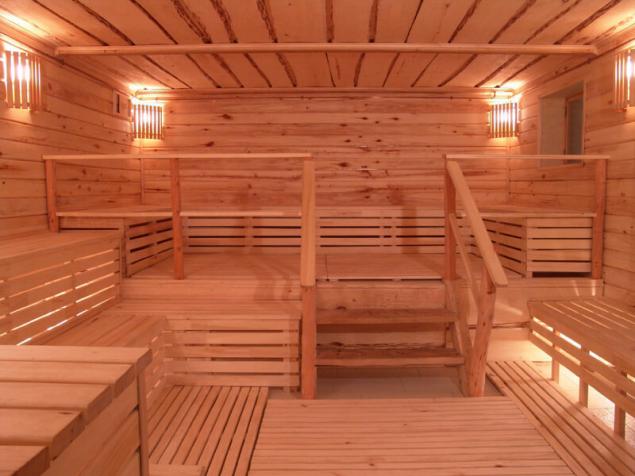
4. heat-reflecting insulators
Foil insulation is widely used for insulation of rooms, including baths. There are some of the most commonly used materials with aluminum coating or metallized polypropylene film, which reflects infrared radiation, i.e. heat. These are polyurethane foam, polyethylene foam boards, mineral wool with foil coatings.
The use of the reflective layer increases the level of thermal insulation capabilities of the material at times, and also increases its service life, as it prevents water vapor from entering the insulator material. The level of sound insulation, resistance to temperature changes increases, as a result of which most insulators quickly become unusable.
Attention! A distinctive characteristic of foilgoisols is resistance to radiation. It is also possible not to use additional measures of chemical processing of materials.5. Environmental alternatives
Insulation made of glass, peat and paper - unappreciated thermal insulation materials. Let us consider their characteristics in more detail.

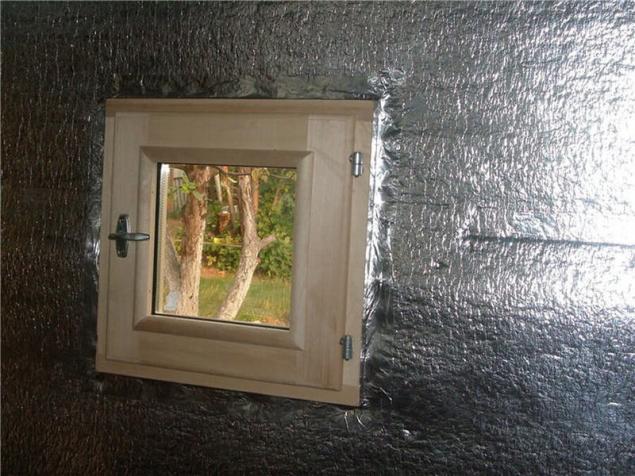
Insulation of the bath with their own handsInstallation of thermal insulation with your own hands in the bath requires compliance with certain rules:
1. Outdoor insulation. Helps to preserve in its original form the walls of the bath, does not allow the walls to dry, prevents the appearance of fungi and mold.
2. Internal insulation helps to improve the effect of external insulation, and also retains heat inside the steam room.
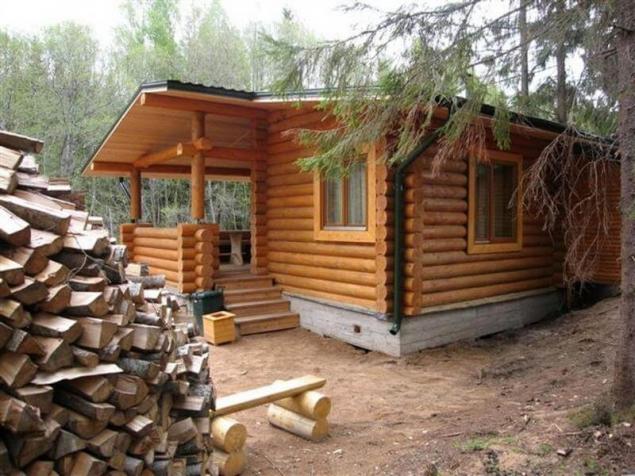
In addition, when building a bath, it is necessary to perform independent installation of insulation on the floor and installation of insulation on the ceiling.
1. Wall insulation
Let’s take a look at the inside of the bath. The scheme is similar to external insulation, but has certain differences.
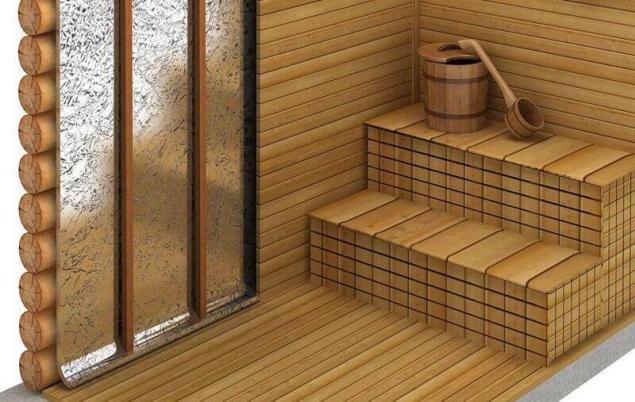
2. Cover insulation
Since the maximum amount of heat goes through the ceiling from the steam room, it should be isolated most carefully. If possible, laying the thermal insulation layer can be carried out on top of the ceiling. Inside, you will need to place a layer of vapor isolation or a thin foilgoisol. If the roof of the bath does not allow work on the ceiling overlap, all stages of insulation are repeated in accordance with the insulation of the walls.
A larger layer of thermal insulation should be laid on the ceiling. Strengthening it from the inside, it is desirable to use fastenings "fungal", since the optimal thickness for mineral wool is 20 cm.
3. Floor insulation
Coziness and stable heat in the bath can be achieved if you pay enough attention to the insulation of the floor, doors and windows. To isolate the sexes carry out such work:
There is no particular difference in the principle of insulation of the inner surfaces of the bath. When using ceramzite for floor insulation, the calculation is made depending on the thickness of the walls. So, the layer of insulation should be at least twice as thick as the walls. But if possible, you can make more of it.
You can get acquainted with the features of thermal insulation in more detail by watching the video: “We insulate the bath with our own hands”, which is at the end of the article. The video describes in detail all the stages of insulation of each structural element of the bath.
When building a steam room, it is necessary to think about external insulation. Its features will depend on the material of the walls. The best option will be a system of ventilated facades with the installation of thermal insulation materials, which have already been mentioned above.
Having carried out high-quality insulation of the bath with his own hands, both inside and outside, the owner will be able to truly enjoy health-improving bath procedures, relax body and soul in a cozy and warm bath. published
P.S. And remember, just changing our consumption – together we change the world!
Source: strport.ru/izolyatsionnye-materialy/utepliteli/uteplyaem-banyu-svoimi-rukami-sovety-ot mastera-po-ustanovke-tep
What materials are used to heat baths. Their pros and consParticular attention should be paid to:
- selection of materials for bath insulation;
- determining the scheme by which it is necessary to produce thermal insulation of the steam room;
- Consideration of various technologies applicable to baths constructed from different building materials.

Preparation for bath insulation begins with the choice of insulating material. Which one should you choose? The answer lies in the main purpose of this building, namely the maintenance of high temperature and the created healing atmosphere inside the steam room. Therefore, it is allowed to use only environmentally friendly and biologically inert materials, both for construction and for insulation of this structure. Those samples of heat insulators that do not withstand high temperature regimes, are able to emit unpleasant odors and gases, spray small particles, are not allowed to use. When choosing thermal insulation for a bath, these factors must be considered.
Insulation, the use of which is optimal in the construction of a bath, can be divided into two classes:
- reflective, which do not release heat outside the room, reflecting the infrared spectrum of radiation back;
- retaining, which maintain the temperature of the internal space, due to its low thermal conductivity.

Insulation of the walls of the bath requires a thorough analysis of existing materials so that the price-quality ratio is most justified.
There are several materials ideally suited for extreme steam room conditions. They will be discussed later.
1. Stone wool
Stone (or otherwise mineral, basalt wool) is a leader among insulation, which has almost no shortage, except for a fairly large volume. It must be taken into account when planning the structure.
Minwata is an environmentally friendly material made during the processing of basalt rock. It does not harm human health or the environment. The finest fibers are formed into layers of varying density and mass. This insulation has truly unique characteristics, thanks to which it has become one of the favorite types among experienced builders.
For the first time, filaments similar to thin filaments were discovered by residents of the Hawaiian Islands after the eruption of one of the volcanoes. Basalt rock melted in the vent at a temperature of over 2000 degrees. Later, the natural formation of stone fiber was repeated in production. Molten in the furnace to 1500 degrees, the rock passing through the streams of air, turns into solid thin fibers. After applying special binders, at 300 degrees and pressure, they are pressed into plates.

Technological characteristics of stone wool:
- Many small air pores formed among the chaoticly located fibers of wool, determine a high degree of thermal insulation. It ranges from 0.038 to 0.045 W/K*m.
- When the basalt wool gets moisture, it does not absorb it, that is, this material has hydrophobicity. Also, no condensate particles are formed among the fibers.
- The material belongs to the category of non-combustible. Since it begins to melt only at temperatures exceeding the threshold of + 1114 degrees Celsius.
- Street noises will not penetrate the room if the cotton wool is placed in the exterior of the building, since the material has excellent sound insulation qualities.
- Even with the passage of time, mineral wool plates practically do not change their shape, with proper installation do not sag and will retain their original characteristics for many years.
- Chemical and biological inertness of the material ensures its safety from the influence of foreign substances, mold infections and fungi, rot. Although formaldehyde resins are used to fasten the fibers, their content is so minuscule that they do not stand out in the surrounding space. In addition, unlike glass wool, the fibers of this material do not irritate the skin and mucous membranes, it is also safe for allergies.

2. Glass
The structural structure of this material is identical to stone wool. Many small fibers of inorganic glass, intertwined, form air chambers that perfectly retain heat. At the same time, the vapor permeability of glass remains excellent. The material is produced, both in rolls and plates of various thickness and sizes.
This material is used much longer than basalt wool, and is much cheaper, but the technical characteristics are slightly lower. A significant disadvantage of glass wool is its effect on allergies. Small particles of fiberglass in contact with the skin or mucous membranes can cause itching, burning and other unpleasant consequences. Although it is difficult to work with glassy, it is necessary to isolate it very well from penetrating the room, and in some moments it is quite dangerous to health, the undeniable advantage of this prickly and not very pleasant-smelling material is the fact that mice do not want to live in it.
3. foam
Refers to heat retaining insulators. This is a porous material, which due to lightness, moisture resistance, inertness to the processes of decay and reaction to alkalis and acids, is actively used as a heater. But it is worth noting that already at 80 degrees Celsius, this material can begin to melt, so you can not use it inside the bath. In addition to everything, foam is very fond of rodents.

4. heat-reflecting insulators
Foil insulation is widely used for insulation of rooms, including baths. There are some of the most commonly used materials with aluminum coating or metallized polypropylene film, which reflects infrared radiation, i.e. heat. These are polyurethane foam, polyethylene foam boards, mineral wool with foil coatings.
The use of the reflective layer increases the level of thermal insulation capabilities of the material at times, and also increases its service life, as it prevents water vapor from entering the insulator material. The level of sound insulation, resistance to temperature changes increases, as a result of which most insulators quickly become unusable.
Attention! A distinctive characteristic of foilgoisols is resistance to radiation. It is also possible not to use additional measures of chemical processing of materials.5. Environmental alternatives
Insulation made of glass, peat and paper - unappreciated thermal insulation materials. Let us consider their characteristics in more detail.

- Foam glass is produced at high temperatures. Foamed glass is non-combustible, completely harmless to human health and the environment, has stable forms. With good performance, among its disadvantages there is too much weight and high cost. These factors make foam glass not a very popular material.
- Peat blocks have a high degree of heat and sound insulation. At the same time, this material is completely environmentally friendly, since peat, sawdust and straw are used for its production. Peat blocks do not rot, as they have a bacteriostatic effect. High temperatures and humidity of this insulating material are also not terrible. Quite a new material, in production is not common.
- Ecovata is made from waste paper, a product consisting of processed cellulose fibers. It is environmentally friendly, but strongly absorbs moisture, so using it to insulate the bath is not rational.

Insulation of the bath with their own handsInstallation of thermal insulation with your own hands in the bath requires compliance with certain rules:
- Apply the insulation in accordance with the material used in the construction of walls.
- Install a foil insulator with a metal film inside the room.
- Qualitatively glue all the joints of folgoisol and tightly attach insulating plates. This is to ensure that there are no cold bridges.
- The thickness of the insulation layer should not be greater than the thickness of the bars of the crate.
- Do not violate the procedure for installing the thermal insulation layer of the bath walls.
1. Outdoor insulation. Helps to preserve in its original form the walls of the bath, does not allow the walls to dry, prevents the appearance of fungi and mold.
2. Internal insulation helps to improve the effect of external insulation, and also retains heat inside the steam room.

In addition, when building a bath, it is necessary to perform independent installation of insulation on the floor and installation of insulation on the ceiling.
1. Wall insulation
Let’s take a look at the inside of the bath. The scheme is similar to external insulation, but has certain differences.
- To the wall are attached to the brackets of metal profiles, or bars of the necessary thickness, so that the insulation fits freely into the frame. But there should be no gaps between his mats. Ideally, the step of the crate should be 2 cm less than the width of the insulation.
- To use for fastening crates in wooden houses is better nails, not screws.
- Frame made of metal profile to mount a little more difficult than wooden, but the result will be much better. In conditions of humidity and high temperature, it will last longer. If wooden bars are still used, it is recommended to treat them with special impregnations.
- For internal thermal insulation, it is important that the foil part is located inside the room. If a material without an aluminum layer is used, a vapor insulation film is laid on top of the insulation.
- Finishing elements are attached to the insulation layer. The best option for baths is considered a wagon. It should be remembered that there should be a small air layer between the insulation and the exterior finish (about 1 cm will be enough for air circulation).

2. Cover insulation
Since the maximum amount of heat goes through the ceiling from the steam room, it should be isolated most carefully. If possible, laying the thermal insulation layer can be carried out on top of the ceiling. Inside, you will need to place a layer of vapor isolation or a thin foilgoisol. If the roof of the bath does not allow work on the ceiling overlap, all stages of insulation are repeated in accordance with the insulation of the walls.
A larger layer of thermal insulation should be laid on the ceiling. Strengthening it from the inside, it is desirable to use fastenings "fungal", since the optimal thickness for mineral wool is 20 cm.
3. Floor insulation
Coziness and stable heat in the bath can be achieved if you pay enough attention to the insulation of the floor, doors and windows. To isolate the sexes carry out such work:
- leveled and rammed earth floor is filled with screed;
- the next layer - waterproofing (usually ruberoid or dense polyethylene, which must be laid overlaid and glued seams);
- laying the heat insulator (ceramzite or sheet, fibrous insulation);
- another layer of waterproofing on the same principle;
- Fill the finishing layer of the screed.
There is no particular difference in the principle of insulation of the inner surfaces of the bath. When using ceramzite for floor insulation, the calculation is made depending on the thickness of the walls. So, the layer of insulation should be at least twice as thick as the walls. But if possible, you can make more of it.
You can get acquainted with the features of thermal insulation in more detail by watching the video: “We insulate the bath with our own hands”, which is at the end of the article. The video describes in detail all the stages of insulation of each structural element of the bath.
When building a steam room, it is necessary to think about external insulation. Its features will depend on the material of the walls. The best option will be a system of ventilated facades with the installation of thermal insulation materials, which have already been mentioned above.
Having carried out high-quality insulation of the bath with his own hands, both inside and outside, the owner will be able to truly enjoy health-improving bath procedures, relax body and soul in a cozy and warm bath. published
P.S. And remember, just changing our consumption – together we change the world!
Source: strport.ru/izolyatsionnye-materialy/utepliteli/uteplyaem-banyu-svoimi-rukami-sovety-ot mastera-po-ustanovke-tep
Miracle cure for the growth and luxury of flowering of your plants
How to grow cherry tomatoes: 5 differences in care



